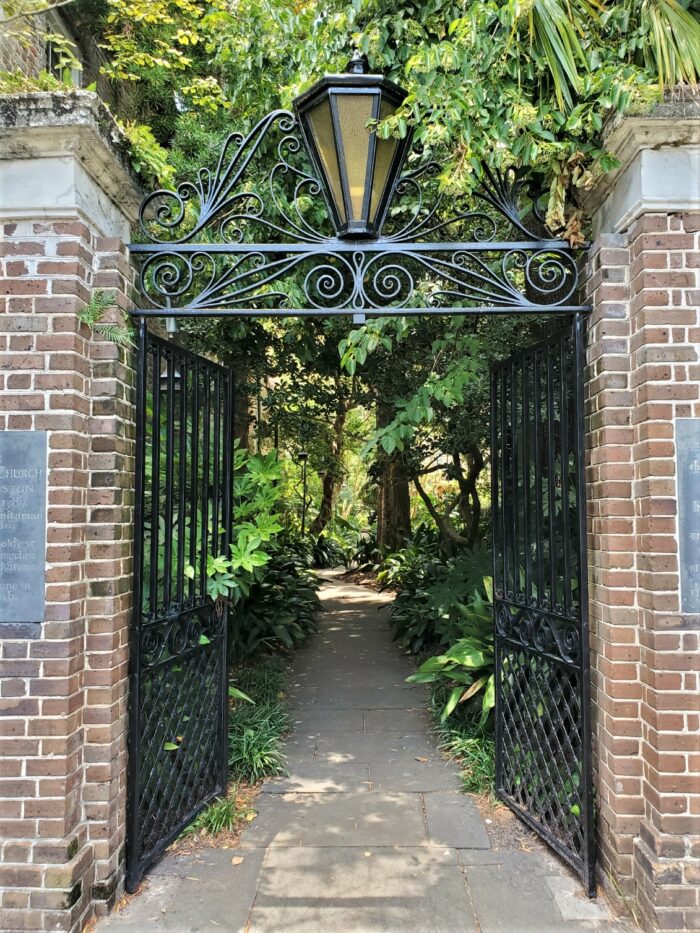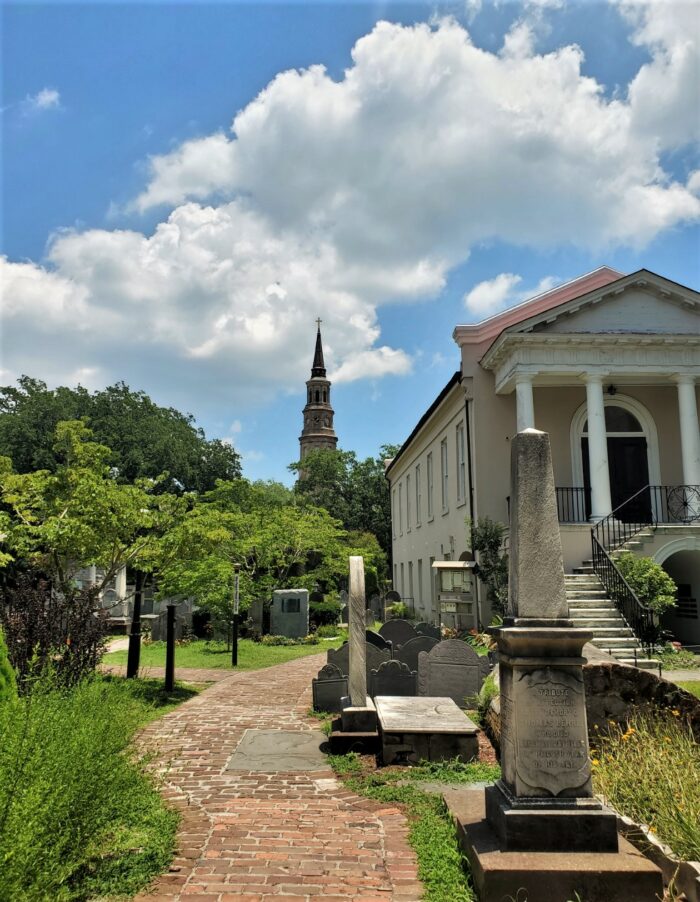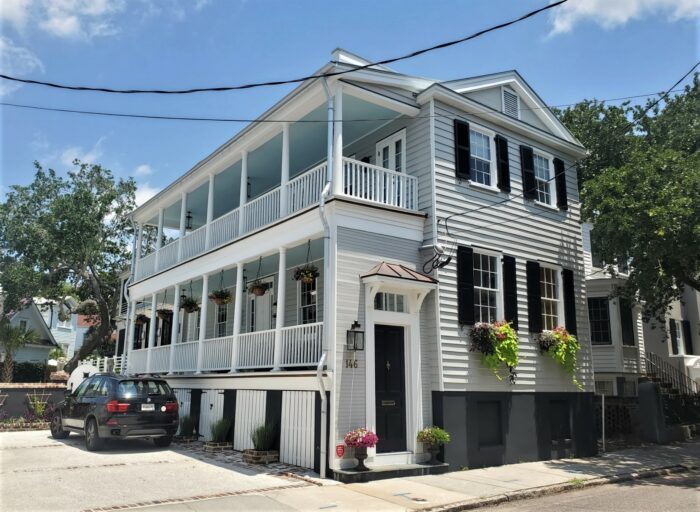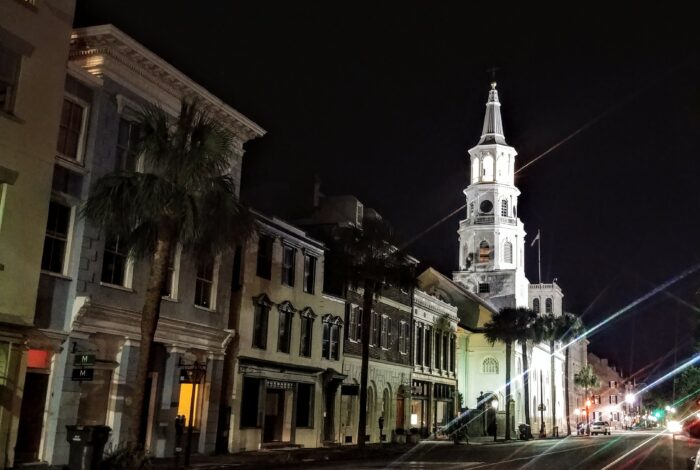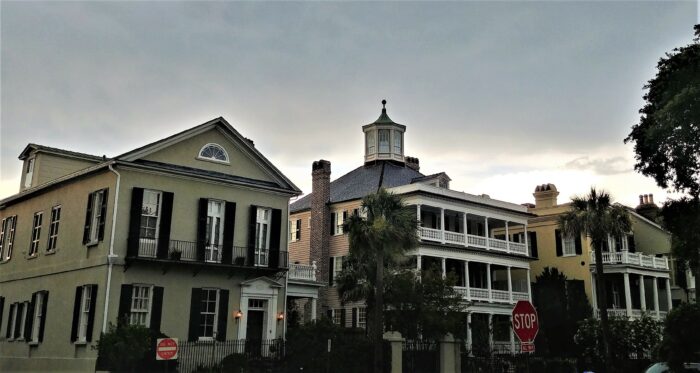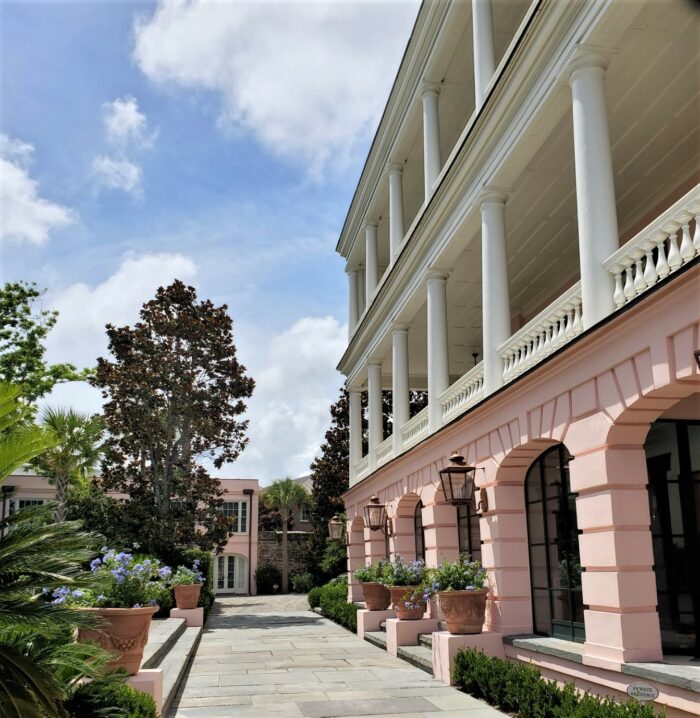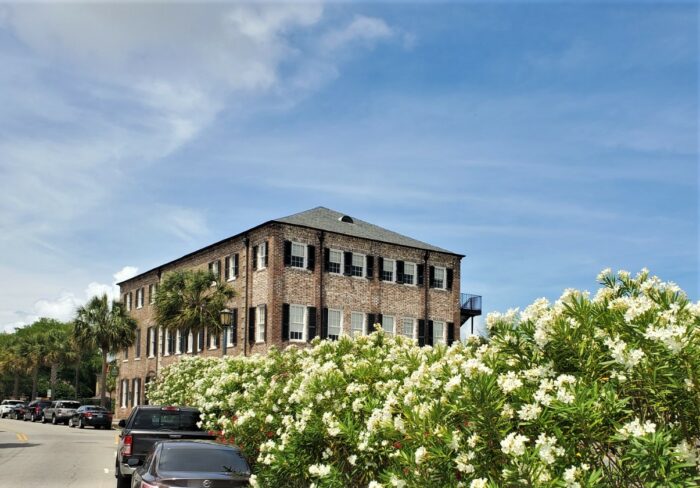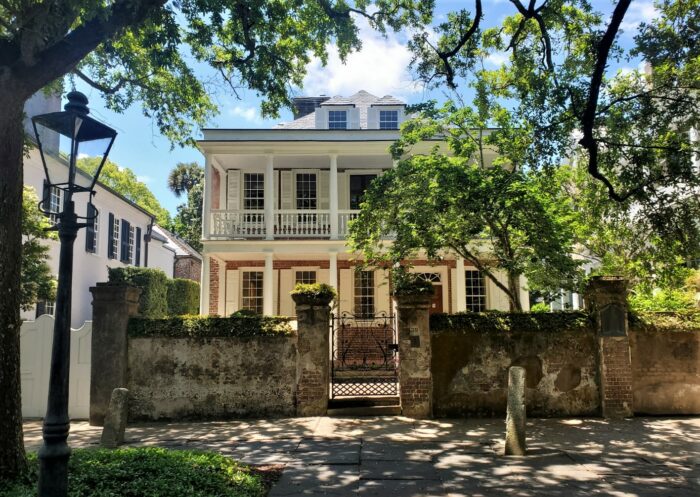This handsome gate on King Street opens on to a cool “cut-thru” that leads to the Unitarian Church on Archdale Street. After construction was started in 1772 the church building almost opened in 1777, but was finally completed in 1787 after it was trashed by both American and British militia which were quartered there (at different times!) during the American Revolution.
Circular
The view from the Circular Congregational Church‘s graveyard on Meeting Street is stunning. In the graveyard you can also find the oldest known grave in Charleston — dating back to 1695.
Elevated
This good looking Charleston single house on Tradd Street (check out the haint blue ceilings, and the gargoyles by the gate) was built in 1892. More recently it was renovated and completely raised to help better deal with the flood waters that sometimes plague the area. It was one of the first to be allowed to be elevated as a form of preservation.
Stained Glass
This church on Meeting Street was built in 1848-50 to house the congregation for Third Presbyterian Church. 1926 the building was sold to Trinity Methodist Church, whose congregation moved from a church they had been in since 1792. As part of the move they brought a Tiffany stained glass window honoring George Walton Williams — who built what became to be called the Calhoun Mansion (now the Williams Mansion).
Black Out
A view down Broad Street to St. Michael’s Church. The church’s steeple was such an inviting target for the British during the Revolutionary War that it was painted black to make it tougher on the British gunners. Unfortunately, it was discovered that the black made the tower stand out even more against the blue sky. Unintended consequences!
All In The Family
Some beautiful houses along South Battery, facing White Point Garden. The Col. John Ashe House (center) was built c. 1782. Col. Ashe gifted the property for the Gadsden-Burckmeyer House on the left to his daughter Mary — who, along with her husband Capt. Christopher Gadsden, built the house around 1820-30.
In The Pink
The house at 5 East Battery, c 1848, was recently painstakingly restored. It is spectacular, as is its garden. The house is often associated with dentistry, because a previous owner (a dentist) is reputed to have painted it and its wall pink to remind people of healthy gums. But, more significantly, one of its earliest owners, Dr. St. Julien Ravenel, designed the “Little David” — the Confederate semi-submersible craft which was a precursor to the first submarine. The design led to the David Class of semi-submersibles of which over 20 were built for the Confederate navy. The Little David itself was used to attack the famous USS Ironsides.
Once Upon A Bastion
The Captain Missroon House has a great view of the oleanders along the High Battery. Built between 1808-1810, in the late 17th century the property was the home of the Granville Bastion — the corner fortress built to protect the walled colony of Charles Town from naval invasions of pirates, Spanish and French. It even was used in the defense against the British during the American Revolution. Cool, huh?
Not South Battery
While most people would likely think this house is on South Battery, it is actually on East Battery (with incredible views of both White Point Garden and the High Battery). Built before the Civil War c. 1858-60, it was actually once owned by Mrs. Robert E. Lee III (formerly Mary Middleton Pinckney — how’s that for a Charleston name!).
Hitching Posts
The cockeyed cement posts in front of the George Eveleigh House (c. 1743) on Church Street were originally used to tie up boats that came along Vanderhorst Creek (which was ultimately filled in and is now Water Street). Now they make people wonder why they are there.
- « Previous Page
- 1
- …
- 25
- 26
- 27
- 28
- 29
- …
- 188
- Next Page »
